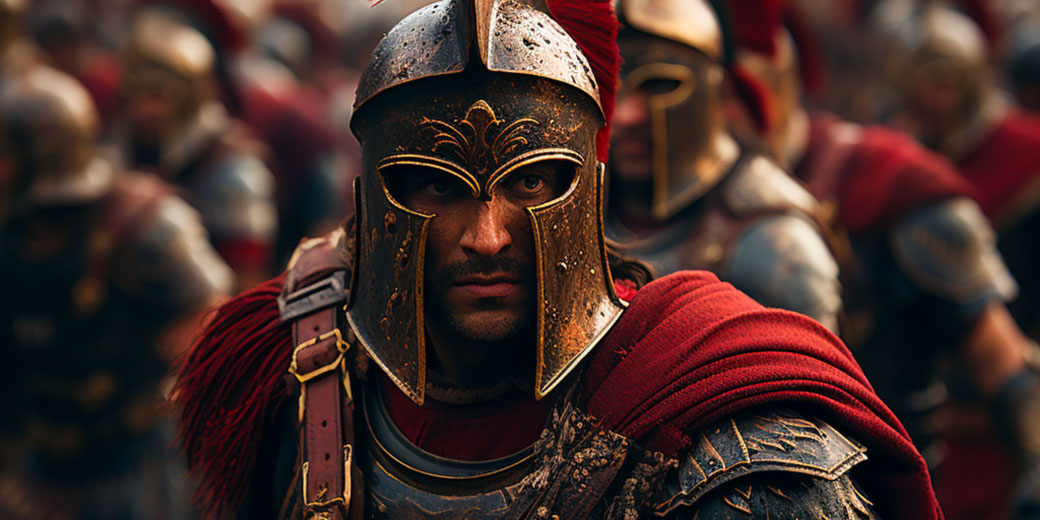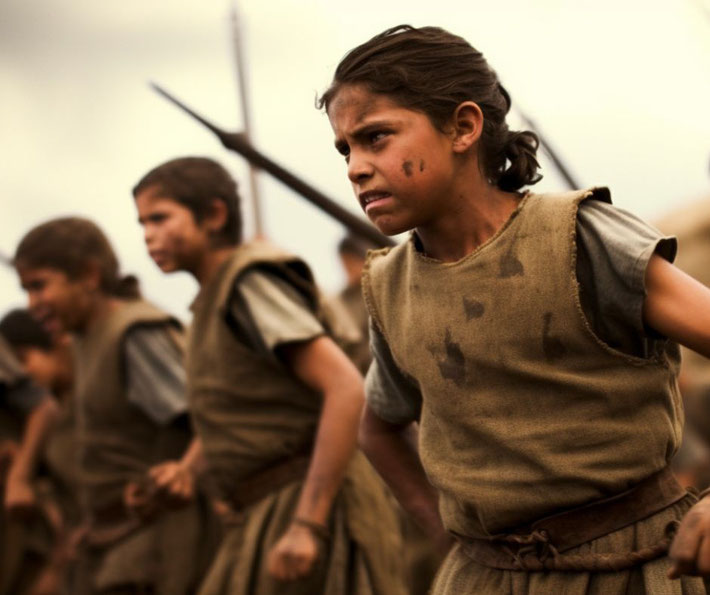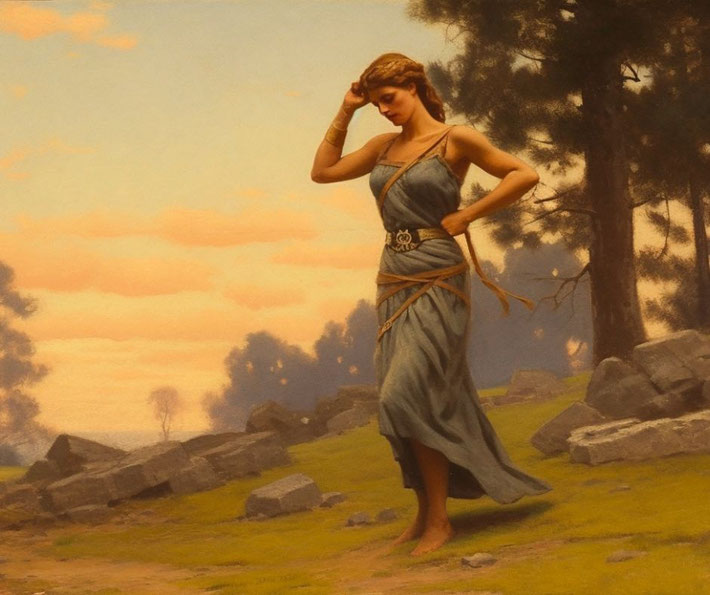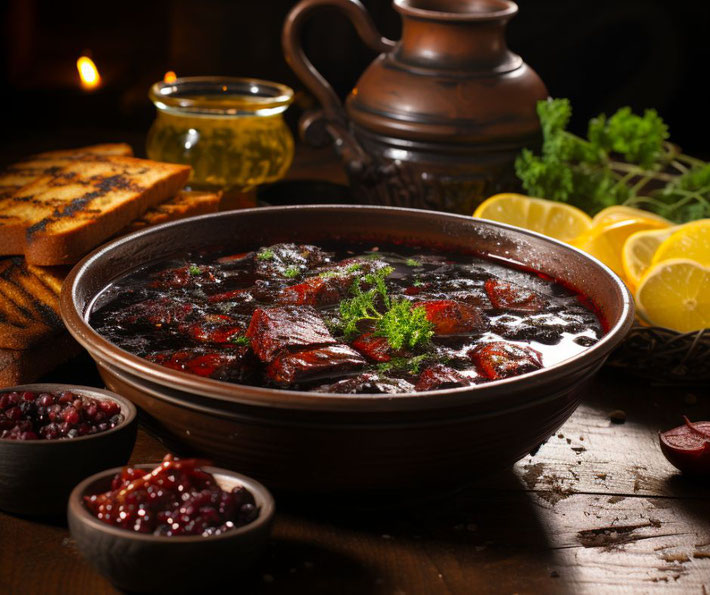9 things you never knew about ancient Sparta

Very few civilizations have captured the imagination quite like the ancient city-state of Sparta. Known for its legendary warriors, austere lifestyle, and formidable military tactics, Sparta has long been a symbol of discipline, courage, and resilience.
Yet, beneath the well-trodden tales of Spartan valor lies a complex and nuanced society, rich with intriguing customs, surprising practices, and profound paradoxes.
1. Their brutal school system
The Spartan education system, known as the "agoge," was a testament to the city-state's unwavering commitment to creating the perfect warrior.
This rigorous training program was not merely an aspect of Spartan life; it was the very essence of it.
At the tender age of seven, Spartan boys were taken from the comfort of their homes and thrust into a world where strength, discipline, and survival skills were the currency of life.
The agoge was a comprehensive system designed to mold boys into the epitome of Spartan ideals.
It was a grueling process that involved physical training, survival techniques, and martial arts.
The boys lived in communal barracks and were subjected to a harsh regimen that included scanty meals, hard physical labor, and relentless exercises.
The aim was not just to forge their bodies into weapons, but also to instill in them the Spartan virtues of endurance, resilience, and self-sufficiency.
But the agoge was not solely focused on physical prowess. It also emphasized intellectual and moral education.
The boys were taught to read and write, but they also learned music, dance, and the art of witty conversation, known as "laconic wit."
They were educated in the laws of Sparta, the works of its poets, and the deeds of its heroes.
The agoge aimed to produce well-rounded individuals who could contribute to society both on and off the battlefield.

2. A surprisingly free place for women
In stark contrast to the rest of the ancient world, Spartan women enjoyed a level of freedom and autonomy that was virtually unheard of.
Their role was not confined to the domestic sphere; instead, they were integral parts of Spartan society, valued for their strength, intellect, and reproductive capabilities.
The Spartan ethos, which placed a premium on physical fitness and mental toughness, applied to women as well as men.
From a young age, Spartan girls were educated alongside boys, a practice that was unique in ancient Greece.
They were taught reading, writing, and arithmetic, but also music, dance, and athletics.
Physical fitness was highly valued, as Spartans believed that strong women would produce strong children.
Girls participated in sports such as wrestling, running, and throwing the discus and javelin.
This focus on physical training resulted in Spartan women being renowned throughout Greece for their strength, beauty, and grace.
Spartan women were also unique in their ability to own and control their own property.
In fact, due to the high mortality rate of Spartan men in warfare, women often ended up controlling much of the Spartan wealth.
This economic power gave them a significant role in Spartan society, one that was far more influential than that of women in other Greek city-states.
Marriage, too, was a different affair in Sparta. Women typically married in their late teens or early twenties, much later than in other Greek societies.
However, it's important to note that the freedoms enjoyed by Spartan women were ultimately tied to the city-state's militaristic focus.
They were free to train, compete, own property, and speak their minds because it was believed that these freedoms would result in healthier children and a stronger Spartan state.

3. The murderous death squads
The Crypteia was one of the most controversial and brutal aspects of Spartan society.
It was a rite of passage for the young Spartan men who had completed their training in the agoge, serving as a final test of their skills and readiness to become full-fledged Spartan warriors.
However, the Crypteia was more than just a test; it was a chilling demonstration of the Spartans' approach to power, control, and social order.
The exact nature of the Crypteia is shrouded in mystery, with different historical sources providing varying accounts.
What is generally agreed upon is that it involved the young men being sent out into the countryside, armed only with a knife, and required to survive on their own for a certain period.
This was a test of their survival skills, resilience, and ability to live off the land, all of which were crucial for a Spartan warrior.
However, some sources suggest a darker aspect of the Crypteia. It is said that the young men were instructed to kill the helots - the enslaved population of Sparta - whom they encountered during their survival test.
This was not only a test of their martial skills but also a form of intimidation and population control.
The helots vastly outnumbered the Spartans, and the threat of the Crypteia served to keep them in a state of fear and submission.
4. The horrible food they ate
The Spartan way of life was characterized by austerity and simplicity, and nowhere was this more evident than in their cuisine.
Spartan meals were known for their frugality, a stark contrast to the elaborate feasts of other ancient societies.
This simplicity was not due to a lack of resources, but rather a deliberate choice, reflecting the Spartan values of self-discipline and moderation.
The most famous dish in the Spartan diet was the "black broth," a simple concoction of pork, blood, vinegar, and salt.
It was said to be so unpalatable to those not raised on it that a visiting Sybarite, a citizen of a city known for its luxury and excess, joked that he now understood why Spartans were willing to die in battle.
After all, death was preferable to a life sustained by such a broth.
But to the Spartans, the black broth was more than just a meal. It was a symbol of their way of life.
It was a testament to their belief in simplicity, self-sufficiency, and equality. In the communal mess halls, known as syssitia, all Spartan men would eat the same food, regardless of their social status.
There were no extravagant dishes for the rich or meager portions for the poor. Everyone was equal, united by the shared experience of the black broth.
The Spartan diet also served a practical purpose. The simplicity and predictability of the meals allowed the Spartans to focus on their training and duties without being distracted by the pleasures of the palate.
Moreover, the diet was high in protein and nutrients, providing the Spartans with the energy and strength they needed for their rigorous physical activities.

5. They always had the last word in an argument
The Spartans were not just renowned for their physical prowess and austere lifestyle, but also for their sharp wit and economy of words.
This characteristic brevity and directness in speech is known as "laconic" wit, named after Laconia, the region of Greece where Sparta is located.
Spartan conversation was stripped to its bare essentials, much like their lifestyle, and this form of communication has left an indelible mark on history.
The laconic phrases of the Spartans were not just brief; they were also pointed and often laced with dry humor.
This was a reflection of their training and mindset, which valued simplicity, directness, and practicality.
They had no time for flowery language or lengthy debates; they preferred to get straight to the point.
One of the most famous examples of this is the Spartan king Leonidas's response to the Persian demand for the Greeks to lay down their weapons at the Battle of Thermopylae.
Leonidas's reply was a simple "Molon labe," or "Come and take them." This succinct phrase perfectly encapsulates the Spartan spirit of defiance and courage.
Another example is the response of the Spartan ephors when Philip II of Macedon, after having conquered most of Greece, sent a message to Sparta saying, "If I enter Laconia, I will raze Sparta."
The Spartans' reply was just one word: "If." This brief yet powerful response demonstrated their fearlessness and determination.
These laconic phrases were not just clever retorts; they were a form of psychological warfare.
They demonstrated the Spartans' unshakeable confidence and resolve, often leaving their enemies unsure and intimidated.
The Spartans understood that words, like weapons, could be used to gain an advantage in battle.
6. How they decided which babies to raise
One of the most chilling aspects of Spartan society was the practice of infanticide. The Spartans were fiercely selective about who was allowed to join their ranks, and this selectivity began at birth.
If a baby was born with any physical defects or perceived weaknesses, it was left on a hillside to die of exposure.
This practice, known as exposure or discarding, was a stark demonstration of the Spartan obsession with physical strength and perfection.
The decision to expose a child was not taken lightly. When a baby was born, it was bathed in wine to test its strength and then examined by a council of elders.
If the baby was deemed to be weak or deformed, it was taken to a place known as the Apothetae, a chasm at the foot of Mount Taygetus, and left to die.
The Spartans believed that only the strongest should survive and contribute to the society.
This brutal practice was seen as a necessary measure to maintain the strength and purity of the Spartan race.
It's important to note that this practice was not unique to Sparta and was relatively common in the ancient world.
However, it was particularly institutionalized in Sparta due to their focus on physical prowess and military might.
The Spartans believed that every citizen had a duty to contribute to the society, and those who could not were seen as a burden.

7. The weird way they got married
Spartan marriage rituals were as unique and unconventional as the rest of their society.
These rituals, steeped in symbolism and tradition, were designed to promote strong offspring and a harmonious society.
Unlike many other ancient societies, Spartan marriages were not about romantic love or political alliances, but rather about producing the next generation of robust Spartan warriors.
One of the most peculiar aspects of Spartan marriage was the ritual of the "bride capture."
After the marriage was arranged, the groom, often with the help of his friends, would "abduct" his bride.
This was purely symbolic, as the bride was fully aware and consenting. The ritual was a nod to the Spartan belief in the virtues of struggle and competition.
After the "capture," the bride would have her head shaved and be dressed in men's clothing.
She would then be left alone in a dark room, where her groom would come to "claim" her.
This ritual was believed to ease the transition for Spartan men, who until their marriage had lived and slept in communal barracks with other men.
Spartan men typically married in their late twenties or early thirties, much older than men in other Greek city-states.
This was because they were expected to live in the communal barracks and focus on their military duties until that age.
Spartan women, on the other hand, usually married in their late teens or early twenties.
Married couples did not typically live together immediately after marriage. The men continued to live in the communal barracks and would sneak out to visit their wives.
This arrangement could last for several years until the man was released from communal living.
8. Money without coins
In keeping with their ethos of simplicity and austerity, the Spartans had a unique approach to currency.
Unlike most other city-states in ancient Greece that used coins made of precious metals like gold and silver, Sparta used iron bars as currency.
This was a deliberate choice, aimed at discouraging the accumulation of wealth and promoting equality among its citizens.
The iron bars used as Spartan currency were known as obols. They were large and cumbersome, making them difficult to transport in large quantities.
Moreover, they were dipped in vinegar while hot to render them brittle and useless for anything other than exchange.
This ensured that the iron currency had little intrinsic value and could not be used for other purposes, such as making weapons.
This Spartan currency system served several purposes. Firstly, it discouraged theft, as the iron bars were of little value to outsiders.
Secondly, it discouraged the accumulation of wealth, as the physical nature of the currency made it difficult to hoard.
Lastly, it discouraged trade with other states, keeping Sparta self-sufficient and isolated from foreign influence.
The use of iron currency demonstrates the Spartan focus on equality and communal living.
In Sparta, wealth was not measured by the accumulation of material possessions, but by one's contribution to the state.
This was a society where the common good was placed above individual gain, and where the pursuit of wealth was seen as a distraction from one's duty to the state.
9. Festivals are better when everyone is naked
The Festival of the Gymnopaedia, also known as the Festival of Naked Youths, was one of the most important and distinctive events in the Spartan calendar.
This annual festival was a celebration of music, dance, and physical prowess, and it played a crucial role in the social and cultural life of Sparta.
The Gymnopaedia was held in the middle of the summer, and it involved boys and young men from all classes of Spartan society.
They would perform war dances and athletic displays in the nude, showcasing their physical strength, agility, and grace.
These performances were not just a display of physical prowess, but also a form of military training, teaching the boys rhythm, coordination, and how to move in unison, all of which were essential skills on the battlefield.
Music was a key component of the Gymnopaedia. The performances were accompanied by songs and the playing of the aulos, a type of ancient Greek wind instrument.
These songs often told stories of Spartan heroism and valor, reinforcing the values of courage, discipline, and self-sacrifice.
The Gymnopaedia was also a communal event, bringing together the entire Spartan society.
It was a chance for the young men to demonstrate their readiness to serve the city-state, and for the older men to appraise the upcoming generation of warriors.
It was also an opportunity for families to display their contribution to the state, as the performance of their sons reflected on their standing in the community.
The Festival of the Gymnopaedia, therefore, was not just a celebration, but a vital part of the Spartan education system and military training.
It was important to the Spartan belief in the importance of physical fitness, rhythm, and unity, and it reinforced the values and ideals at the heart of Spartan society.
What do you need help with?
Download ready-to-use digital learning resources
Copyright © History Skills 2014-2024.
Contact via email
With the exception of links to external sites, some historical sources and extracts from specific publications, all content on this website is copyrighted by History Skills. This content may not be copied, republished or redistributed without written permission from the website creator. Please use the Contact page to obtain relevant permission.





